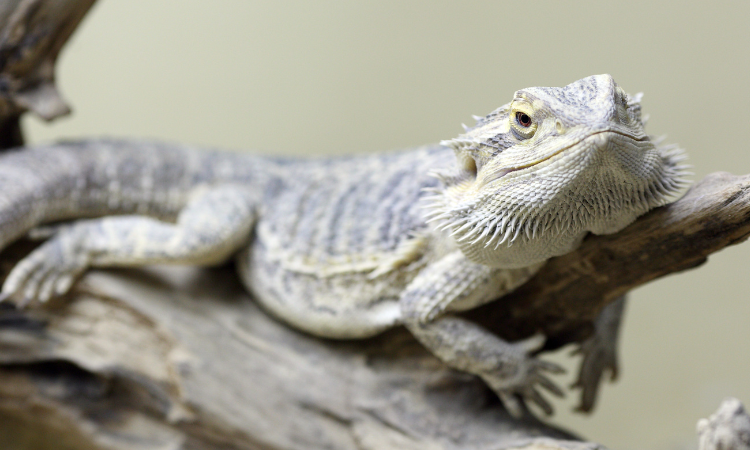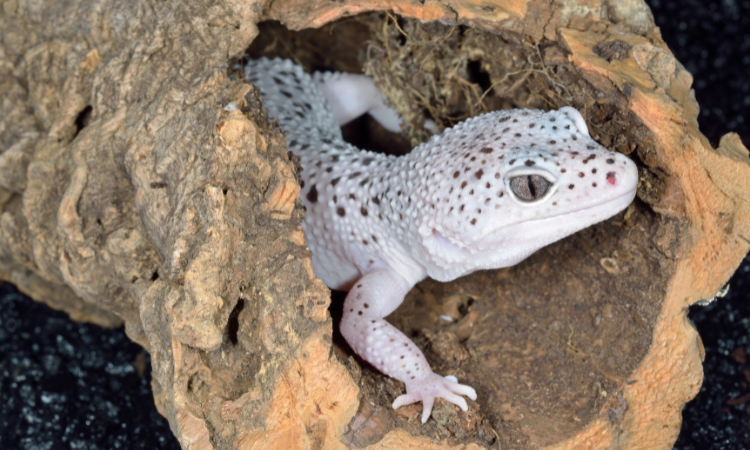Bearded dragons and leopard geckos are both popular lizard pets, but can they co-exist? Some bearded dragon owners wonder if their pet will try to eat a leopard gecko, so let’s take a look at whether or not these two lizards are compatible.

As reptile enthusiasts, we often have multiple reptiles in our collections. One common question that arises among owners of different species is whether or not their reptiles will eat each other. In this blog post, we will explore the question of whether or not a bearded dragon will eat a leopard gecko.
The natural diets of geckos and bearded dragons
Firstly, it is important to understand the natural diet of these two species in the wild. Bearded dragons are omnivores, which means they eat both plants and animals. Their diet in the wild consists of insects, such as crickets and mealworms, as well as vegetation.
Leopard geckos, on the other hand, are strict insectivores, which means they only eat insects. Their diet in the wild consists mainly of crickets, mealworms, and other small insects.
In captivity, both species are often fed a diet consisting of insects, such as crickets and mealworms, as well as other supplements and vegetables. It is important to note that feeding a varied diet is essential to the health of both species.
Will bearded dragons eat leopard geckos for dinner?
Now, back to the question of whether or not a bearded dragon will eat a leopard gecko. While it is not common for bearded dragons to eat leopard geckos, it is not unheard of.
This is because bearded dragons are opportunistic feeders, which means they will eat anything that they can fit into their mouths. Leopard geckos are smaller than bearded dragons, so there is a chance that a bearded dragon may view a leopard gecko as prey and try to eat it.
However, there are some steps that you can take to prevent this from happening.
Make sure to house your bearded dragons and geckos separately.
Firstly, it is important to house bearded dragons and leopard geckos separately.
This means that they should not be kept in the same enclosure or allowed to interact with each other unsupervised.
If you are unsure whether or not your bearded dragon will view a leopard gecko as prey, it is best to err on the side of caution and keep them separate.
Additionally, feeding a varied and nutritious diet to both species can help reduce the likelihood of one species viewing the other as prey. This is because if both species are well-fed and healthy, they are less likely to view each other as a potential food source.
So, while it is not common for bearded dragons to eat leopard geckos, it is still a possibility. It is important to take steps to prevent this from happening, such as housing the two species separately and feeding a varied and nutritious diet to both. By taking these precautions, you can ensure that both your bearded dragon and leopard gecko remain healthy and happy in their respective habitats.
Bearded dragons are omnivorous, meaning they eat both plants and animals
Bearded dragons are a type of gecko found in the wild across much of Australia. Their signature feature, as their name suggests, is their beards – a mass of bristles that can be flared out to appear larger and more intimidating.
But more interesting than what they look like is their diet: unlike most geckos, bearded dragons are omnivorous and will consume both plants and animals. This allows them to survive in a variety of habitats with diverse resources, such as woodlands and semi-arid deserts.
In captivity, owners should feed their pet bearded dragon a balanced diet composed of mushrooms, fruits, insects, leafy greens, and worms or other small aquatic critters. With proper care and feedings bearded dragons make excellent family pets!
Leopard geckos are insectivores, meaning they only eat insects
Leopard geckos are unique creatures with a unique diet. As insectivores, geckos only consume insects, generally consisting of small prey such as crickets, mealworms and waxworms. This allows them to have all the necessary sources of protein and minerals needed to keep healthy and strong while avoiding any harm from larger predators not typically found in their native environment.
While these geckos may seem small, their claws allow them to catch their insect prey with remarkable ability. By sourcing their nutrition in this way, leopard geckos can find an ideal balance of nutritional requirements and remain safe at the same time.

A bearded dragon may try to eat a leopard gecko, but it’s not likely
Despite their size, leopard geckos are surprisingly resilient animals. They actively defend themselves against larger predators like the bearded dragon, who may try to eat them!
Gecko owners should always exercise caution when keeping larger lizards near leopard geckos as one can never be quite sure how a particular lizard may react.

If you have both a bearded dragon and a leopard gecko, it’s best to keep them in separate tanks to avoid any potential conflict
Keeping a gecko and a bearded dragon in the same tank can be risky, as they have different needs and may cause conflict. To avoid this, it’s best to keep each species of reptile in its own, separate tank.
Each tank should also house only one gecko or beardie, as they both require their own space and may become territorial if they share an enclosure. In addition to keeping them separate, providing plenty of hiding spots and climbable surfaces help both geckos and bearded dragons feel comfortable in their tanks.
This helps provide them with a safe area to retreat to when feeling stressed out or threatened at all times.

Hi – I’m Erika, the lead gecko enthusiast here at Geckopedia! I write articles about pet geckos, including what to feed your leopard gecko and how to help your pet gecko live a long, happy life! I graduated with advanced degrees from UC-Berkeley, the University of Southern California (USC) and Indiana University-Bloomington, where I studied Biology and Animal Science. I use my experience to help others learn about gecko care, and I am an advocate for all topics gecko related!
